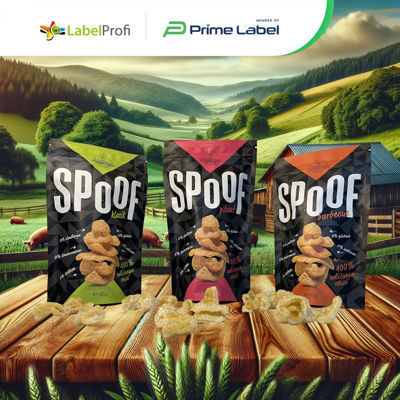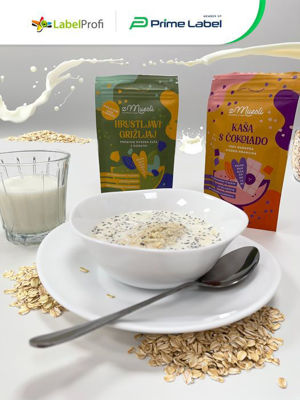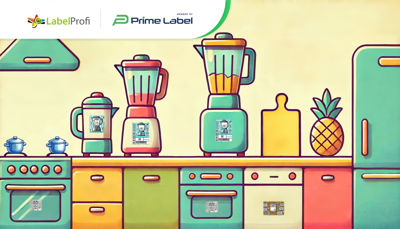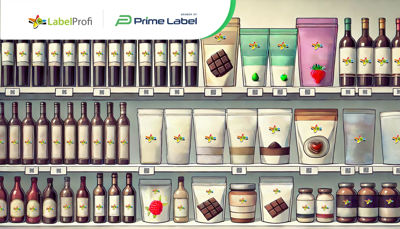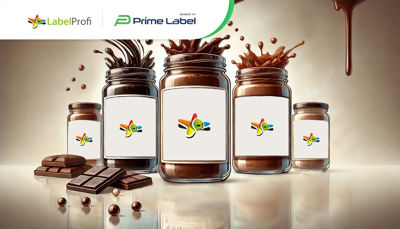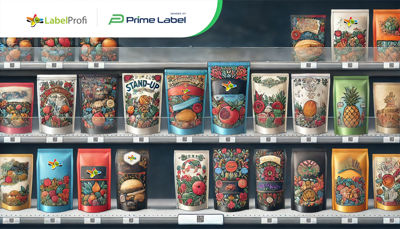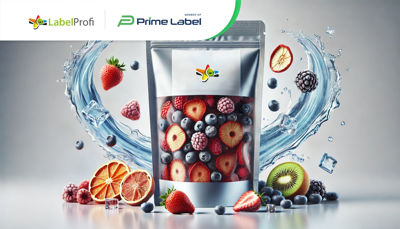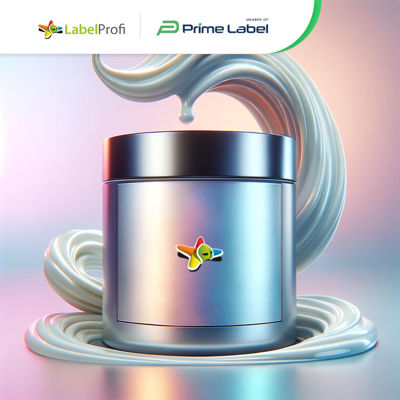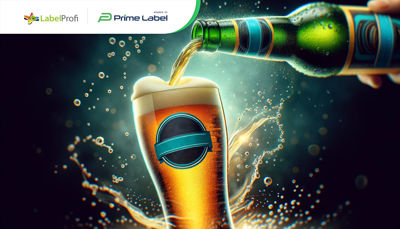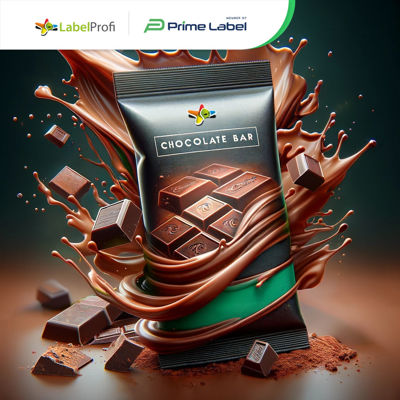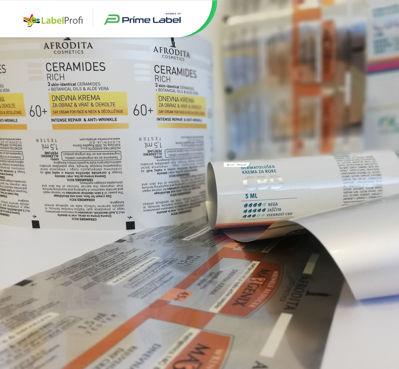Fun Packaging Ideas to Catch the Eye
5/24/2024
Good marketing is about capturing the consumer's attention. For a product to sell, it needs to catch the eye. One of the best ways to do this is through the product itself, specifically its packaging.
Today we've collected a number of interesting and fun packaging ideas to help do just that. If you'd like some help marketing from the shelf, read on.
Idea #1: Try Stand Up Pouches
Designing a product for a stand up pouch allows for a packaging solution with a lot of benefits even beyond its ability to catch the eye on shelves.
One of the most obvious benefits is how versatile pouches are. Almost any shelved product that comes in many pieces (including powders) can be sold in one. Toys, dog treats, and even shampoo all can and have been sold in pouches and that's not an all-inclusive list.
Stand up pouches are easy to transport both for businesses and consumers, all while being one of the single most green packaging options on the market today.
On top of all that, the cost per unit for pouches tends to be lower than alternatives.
Idea #2: Consumers Like Red...
This next idea is all about colour. In short, red is the most common colour choice when it comes to marketing and for good reason.
People tend to associate red with power and desirability. It also grabs the eye and is very easy to spot from afar. Whether you use it on its own or as an accent, it's hard to go wrong with red.
We will say, however, that you should be careful combining red with its complement (green). Red and green combined, for better or worse, is associated with Christmas, at least in the West.
Our recommendation is actually a Triad approach. This is where you choose three colours equidistant from each other to produce contrast while maintaining a sense of harmony.
In the case of red, this would mean a colour scheme of red, yellow, and blue. If you pay close attention, this is a pretty common combination of colours (especially when companies are marketing multiple products together) and for good reason.
Idea #3: ...but Less Common Colours Stand Out
The flipside to the above, of course, is that consumers see a lot of red in their day-to-day. There's an argument this has had the unintentional effect of reducing the colour's allure.
If you can make a different colour work for your product, it can pay off big time on shelves. If you're taking this approach, however, we recommend first looking at what the competition is doing.
If you've decided to choose a different colour scheme, it has to be different. So don't only avoid red; avoid the colours your competitors are tending towards.
Of course, there are different levels to this approach. Some companies might avoid making common colours the dominant one on their packages while others might avoid them outright. At the end of the day, it all depends on what looks good and what your goals are.
Idea #4: Packaging Should Be Memorable
Believe it or not, packaging can be pretty evocative with the right artistic approach. If you've ever seen a package that feels like it's from a different time period or had an elaborate mural or graffiti style to it, then the odds are good you remember it.
Even though the purpose of packaging is to hold, and in some ways sell, a product, it can be more. If your consumers can describe your packaging as beautiful or interesting or even "neat" then you have an edge over the competition.
It is often said that consumers buy with their eyes. That's is true but you also need packaging they can recall. Design a package that people feel like they're missing out on whenever they decide to walk by it in the store.
Good packaging draws the eye. Great packaging keeps the consumer, at least in some small way, engaged with your packaging even once it has left their sight.
Idea #5: Aim for a Luxury Look
Packaging with a luxury feel can make your product feel far more valuable than the actual cost of materials. Moreover, luxury packaging doesn't have to be all that expensive either.
For example, smoky glass combined with a nice label can move large amounts of products. It makes the bottle feel premium and, by extension, the contents of the bottle.
There is are certain aesthetics we tend to associate with luxury. Black packaging with gold lettering is one of the most common. A white package with all other elements being black gives a similar feel.
While you can't justify packaging costs ballooning, it's worth thinking about whether the luxury aesthetic might be viable for a given product. It's also much easier to achieve the higher the unit price already is since the small rise in price becomes less important.
Idea #6: Let the Product Accentuate the Look
Sometimes the product within a package can actually be used not unlike another artistic element of the design. If elements of your package are made clear, you can use what's underneath as part of the aesthetic.
This is easiest to do with liquids. One could imagine a cutout of lips on a container containing red liquid to colour them in. A cutout of the fruit a drink is flavoured, coloured by the drink itself, is another good example.
Done right, it's a fun gimmick that makes a product more memorable. It also has the potential to allow for savings on materials, depending on the nature of the packaging.
Idea #7: Consumers Love Eco-friendly Options
Packaging that's eco-friendly sells. People worried about the planet love it and those who aren't will, at worst, be indifferent. Combined with a good aesthetic, there are few downsides to going green.
In fact, some consumers will do their best to only buy eco-friendly products or will at least be willing to pay more if it means a greener option compared to the competition.
This sort of packaging can also make you more appealing to certain businesses with a greener business philosophy. While packaging tends to matter less in B2B transactions, green packaging is definitely something many businesses find attractive.
Going eco-friendly isn't as hard as many think. Green packaging used to mean a high premium but costs have gone way down as science and technology improve.
Idea #8: Get a Mascot
If you can create a brand mascot consumers identify with, it's going to help sell products. Disney is famous for this approach but, if you look hard at shelves, you'll notice they're far from alone.
The trick is making a mascot your audience will actually engage with. Children may love cartoons but adults often prefer a human adult to be the face of their chosen brands. It all depends on your core demographic.
It's also important to note you shouldn't cheap out when designing a mascot. If you're taking that route, make sure the mascot feels professionally designed and that they can stand a decade or more of representing your products.
The reason for this is that suddenly dropping mascots or swapping them out can be confusing. Even redesigns are a mixed bag. Big companies like Kellogg's have gotten some flack for swapping out the designs of mascots people are familiar with.
Idea #9: Go Weird
This last tip is one of the most risky but it can have a big payoff. Sometimes making your packaging strange pays dividends.
Consider Brandless. Their marketing gimmick is their products use very simple designs with minimalist colour schemes. There is almost no branding whatsoever (hence their name).
It's weird and it works, in large part because they are the only ones on the shelves with packaging that looks the way it does. It also doesn't look bad to the eye; being the odd-one-out doesn't mean a product is necessarily ugly.
If you can come up with a packaging gimmick that is bizarre and draws consumer attention, it has the potential to sell on gimmick alone. The caveat, of course, is things also tend to be designed as they are for a reason.
When choosing a "weird" aesthetic, make sure the packaging still indicates what people are buying and doesn't look outright ugly. Done wrong, weird can definitely backfire.
Good Packaging Ideas Sell Products
The above packaging ideas are only a small portion of the infinite ideas one can use to market a product. Don't be afraid to combine ideas and otherwise experiment to see what your target demographic most connects with.
If you need help with packaging or labelling, we'd love to help. Contact us and we can discuss your specific needs! We've helped over 1000 companies and we'd love to help you too.


